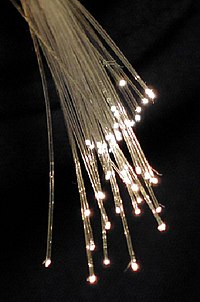
Photo from wikipedia
A floating bridge can be effectively used for sea-crossing in deep water. Because the superstructure of the bridge is supported by floating substructures with pontoons, the conventional fixed piers, towers,… Click to show full abstract
A floating bridge can be effectively used for sea-crossing in deep water. Because the superstructure of the bridge is supported by floating substructures with pontoons, the conventional fixed piers, towers, foundations, and piles are not required. Instead, a rational mooring system can be used to strictly maintain the target position of the floating substructures against environmental loads, including winds, waves, and currents. Recently, long-span cable-supported bridges with floating towers were investigated and found to overcome the limitations of conventional cable-supported bridges, when used as sea-crossing infrastructure. To design the moorings for very large floating structures, the structural safety should be carefully investigated. In addition to the maximum stress, fatigue damage should also be studied. This study aims to investigate the characteristics of the short-term fatigue damage accumulated at sections of the tethers in long-span cable-supported bridges under harsh wave conditions. To evaluate the accumulated fatigue damage due to waves, the Palmgren– Miner rule is used, wherein the time-series wave-induced stresses acting on sections of the tethers are analyzed using the rainflow counting method. The wave-induced stresses are obtained by conducting time-series hydrodynamic analyses for a floating-bridge model, using ABAQUS AQUA. An irregular wave with 100-year return period, modeled by JONSWAP wave spectrum, is applied to the structure. The effects of the floater type, draft, and initial tether inclination on the fatigue damage are summarized after intensive parametric studies.
Journal Title: Journal of Marine Science and Technology
Year Published: 2020
Link to full text (if available)
Share on Social Media: Sign Up to like & get
recommendations!